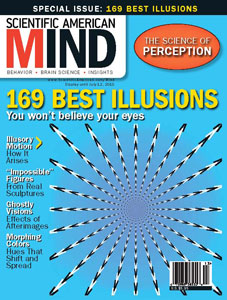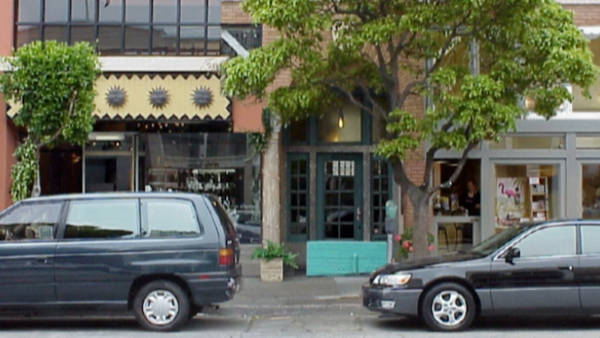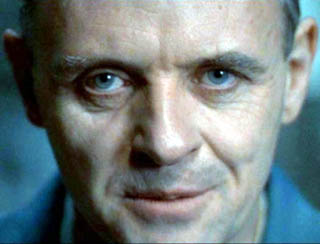Magicians sometimes perform seemingly impossible feats of memory, for instance, to remember the order of a “randomly shuffled” deck of cards. To accomplish this, they use well established mnemonic techniques, such as the “memory palace” also known as the “method of loci”, in which specific objects (such as cards) are assigned to specific locations in space (for instance, objects in the rooms of one’s house, or along a familiar street).
Today we have a special treat: our friend Tom Meseroll, the Martial Magician, describes his memory palace, and some historical background, below. The order of cards in Tom’s deck is not actually presented accurately … to protect the innocent… and some of Tom’s favorite magic.
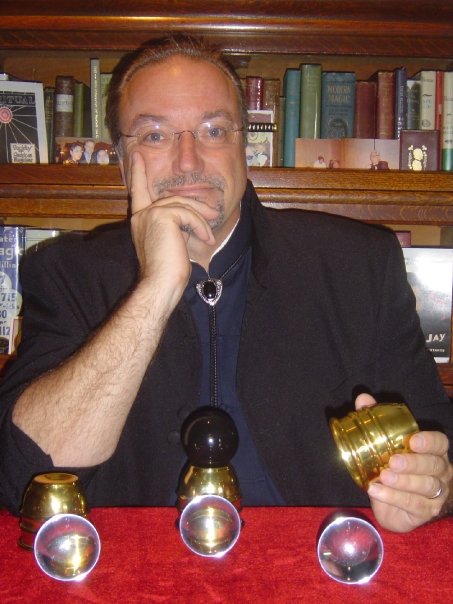
As recounted by Cicero inhis De Oratore,while the poet Simonides attended a banquet in Thessaly, he received a message that two men wanted to see him outside the building, so he excused himself to speak to them. While outside, the roof of the banquet hall fell, crushing the diners to death. The bodies were mangled beyond recognition, and the relatives and friends did not know who was who. Simonides remembered each dinner’s exact place, however, and therefore was able to identify the dead for the relatives. Cicero inferred that persons desiring to train this faculty (of memory) must select places and form mental images of the things they wish to remember and to mentally assign those images to the place, so that the order of the places will preserve the order of the things, like a wax writing-tablet and the letters written on it.
Cicero also provides a description of the mnemonic of places and images (loci and imagines) which was also used by the Roman rhetors. The method of loci (what is now known as creating a memory palace) was actually a memorization technique used by orators to enable them to deliver very long speeches from memory with unfailing accuracy.
The first step in creating a Memory Palace is to imprint in your mind a series of loci or places. Most frequently people used architectural types, like rooms or buildings on a street. According to Quintilian, “a building is to be remembered, as spacious and varied as possible, the forecourt, the living room, bedrooms, and parlors, not omitting statues and other ornaments with which the rooms are decorated.” According to Quintilian, these images are then used as an anchor, in which portions of the speech are associated with the images of the building. “This done, as soon as the memory of the facts requires to be revived, all these places are visited in turn and the various deposits are revived from their custodians.” So the ancient orator is moving his imagination through his memory building whilst he is making his speech, drawing from the memorized places the images he has placed them. This method also ensures that the points are memorized in the right order, since the order is fixed by the sequence of places in the building.
Now the formation of the loci is of the greatest importance, for this same set of loci can be used again and again for remembering different material. Some people recommend that in order to not err in remembering the order of the loci it is useful to give each fifth locus some distinguishing mark. I have tried to do this so I can know the number of where all the cards are… I will show you what I mean as I walk through my palace.
My memory palace is a walk home from my high school through the woods in New Jersey to my parents’ house. I always knew that if I was going to expand my palace beyond 52 cards, I would need to walk into my parents’ home and create a bigger palace. I came up with this idea for my palace after my parents both passed away, and I knew we would be selling the house and I would never go to that neighborhood again, and I wanted it burnt into my memory.
So here we go. Straight from memory, no cheating…. I am bolding all my loci, and suits are represented by s=spades, h=hearts, d=diamonds, c=clubs
I enter the woods coming home from school and see the “LARGE BLACK PIPE (10 d)” that is a water drain into the creek. I turn to the right and see the “TILE TRAIL (q s)” thru the woods where I kissed my first girl. I start towards the left and see the “ TERRACOTTA TURTLE (7 c)” leftover from the old park. The “THREE SKINNY TREES (j d)” are just beyond the turtle. As I walk down the trail through the woods I see “OUR OLD TREE FORT (10 s)” off to the left. I walk further along the creek and see a “REAL TURTLE (8 c)” in the water. I walk underneath the “HIGH TENSION POLE (k h)” and across the creek where there is a “BIG TREE WITH a HEART CARVED in it (9 s)”. I walk a little further and see the bridge to my right with “NINE PLANKS ACROSS THE BOTTOM (5 h)” and “TWO SIDE RAILS (q h)”. I look across the bridge and remember “MY FIRST GIRLFRIEND, KYLE (2 s)” lived on the other side. I turn towards the street into my parents neighborhood, and see the first house to the right where some “RITSY PEOPLE LIVED (j c)” and I remember the lady there was very mean (2 d). I walk further up the street and see “A TREE TO THE RIGHT WITH ANOTHER HEART CARVED IN IT (8 s), and just beyond that the fence starts with “SIX DIFFERENT SECTIONS “ (8 h), and “FIVE BEAMS IN EACH SECTION (9 h)”. I walk further and take a right towards home, the “FIRST HOUSE ON THE LEFT WAS THE HORGAN’S WHO HAD 9 KIDS (5 s)”, and across the street from the Horgan’s was my not-always friend “CURTIS, WHO STOLE MY FIRST GIRLFRIEND (he is the a d)”, and he bought her a “DIAMOND RING (q c)”, and he had a brother I liked, “JAMEY (3 s). I continue walking and see the neighborhood “MAILBOX (j h)” where I once put “EIGHT LIMES IN (6 h)”. I keep walking and the “HOUSE ON THE RIGHT LIVED A GIRL I BRIEFLY DATED (8 s)”. The next “HOUSE OWNED BY THE PICHALESIS (4 d)”. The “HOUSE NEXT, THE SWEENEYS, HAD A GIRL I LIKED (9 c)”, and her “DAD (a c)”. Behind their house was Green Acres golf course and the “ TWELTH TEE (q d)” and just to the right of the Tee was a large “SANDTRAP WE USED TO PLAY IN (j s)”. Looking over the golf course from there I see “THIS REALLY TALL TREE I REMEMBER SOMEONE BUILDING THE HIGHEST TREEFORT I EVER SAW (6 c)”. To the left of the Tree as I head back with my mind into the neighborhood from the course I see “FIVE PALM TREES WHERE I USED TO HIDE IN AND PRETEND TO PLAY STRIP POKER WITH A GIRL IN 6th GRADE (9 d)”. “I (a d)” am in the trees playing cards. I walk back into the neighborhood and “THE FIRST HOUSE ON MY RIGHT BELONGED TO ROSS A HEMOPHELIAC (3 c)” I walk up the street and the next house is “THE HOUSE I USED TO CUT GRASS AT (6 d)” . And the “NEXT HOUSE IS THE DALTON’S (4 h)”. I walk further up the street and to my right is “THE ROGER’S HOUSE WHERE A DEAR FRIEND OF MINE LIVED WHO HUNG HIMSELF (a s)”. I keep walking and the house next to the Roger’s was my doctor’s “THE KRESSLER’S (3 d)”. Across from the Kressler’s was the little “ABANDONED HOUSE WHERE WE USED TO PLAY SEVEN SECONDS IN HEAVEN (7 h)”, and beyond that was “OUR SANDLOT FOOTBALL FIELD (4 s)”. At the top of the field, just before Route 206 was a place where a kid named “BEAST (k c)” tried to sell me a diamond ring, in the “FOUR LARGE PINES (j h)” there. I cross 206 and am now on Rider University land. The first building I see is the “LIBRARY WHICH HAS A LARGE CLOCK ON TOP SET TO 7 (7 s)”. I walk to the left of the library to the student center and into the building where I see a “BOYSTATE GUY (10 c)” making out with “MY FIRST GIRLFRIEND-now the (k d)”, and it is now in the evening “NINE O’CLOCK (5 d)”. I move on and the next building is the chapel where I knew the Priest, “FATHER JEREMIAH (3 h)”. I now start heading back home along sorority row, the first sorority I pass is the “TRI-DELTs (2 c)” and then the “THEATER (7 d)” is on my right. The next sorority is the “FRATERNITY SWEETHEARTS (2 h)”. I walk to the end of the street and see the “STREET SIGN (4 c)” for my street, Twin Oaks Drive. I cross 206 and walk back into my neighborhood and onto my street and to the right are “SIX LARGE PINES with much history (8 d). I walk down the street to where my parents live, “MY HOUSE (k s), and it’s “ADDRESS IS NINE TWIN OAKS DR (5 c)”.
Pretty impressive, right? Check out Sleights of Mind if you’d like to know more about the intersection of magic, mnemonics and neuroscience.
Also, take a look at the trailer for Joe Gold’s film “Desperate Acts of Magic”, where Tom Meseroll and his daughter Melina perform a martial magic trick known as the Sightless Samurai, where Tom, blindfolded, slices a watermelon in half on a volunteer’s stomach with a samurai sword.
–Susana Martinez-Conde & Steve Macknik
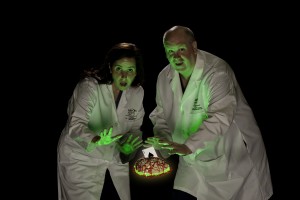 We’re back, but with a different name and on a different site! Come see us at Illusion Chasers, the new daily blog on the MIND Network at ScientificAmerican.com! See you there!
We’re back, but with a different name and on a different site! Come see us at Illusion Chasers, the new daily blog on the MIND Network at ScientificAmerican.com! See you there!



